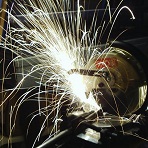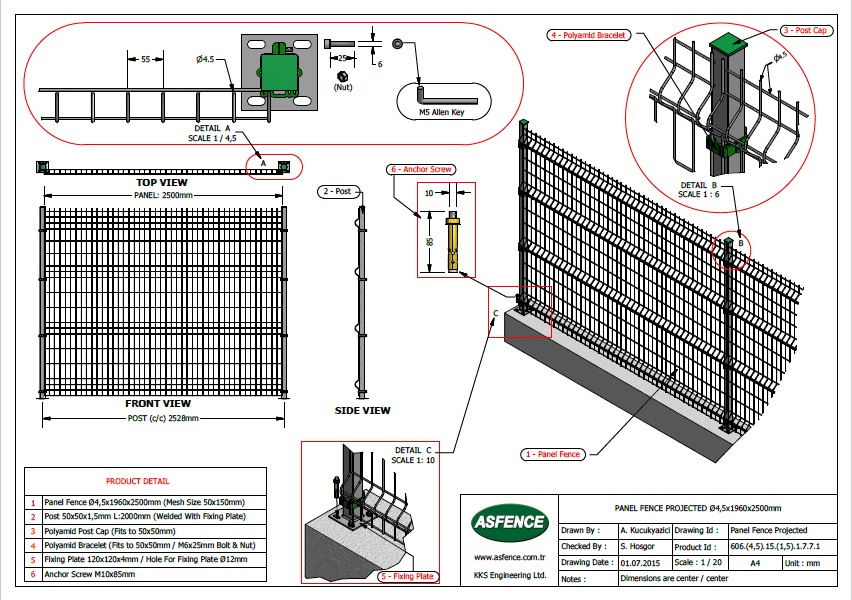Security Fence Products & Solutions made in turkey Check out our products and solutions.
Asfence is incredibly especially extremely qualified and fast.
Thanks for visiting our web page. We hope to cooperate with you. Do not hesitate to contact us if you need further information.
 Strategy
Strategy
 Planning
Planning
 Build
Build
FAQ - More About Fence
The use of galvanizing for structural steel protection gives you ten major, measurable benefits. 1. Lowest first cost. Galvanizing is lower in first cost than many other commonly specified protective coatings for steel. (The application cost of labour intensive coatings such as painting has risen far more than the cost of factory operations such as galvanizing.) 2. Less maintenance/Lowest long term cost. Even in cases where the initial cost of galvanizing is higher than alternative coatings, galvanizing is almost invariably cheapest in the long term (because it lasts longer and needs less maintenance). And, maintenance causes problems and adds to costs when structures are located in remote areas, and when plant shutdown or disruption to production is involved. 3. Long life. The life expectancy of galvanized coatings on typical structural members is far in excess of 50 years in most rural environments, and 20 to 25 years plus, even in severe urban and coastal exposure. 4. Reliability. Galvanizing is carried out to Australian / New Zealand Standard 4680, and standard, minimum coating thicknesses are applied. Coating life and performance are reliable and predictable. 5. Toughest coating. A galvanized coating has a unique metallurgical structure which gives outstanding resistance to mechanical damage in transport, erection and service. 6. Automatic protection for damaged areas. Galvanized coatings corrode preferentially to steel, providing cathodic or sacrificial protection to small areas of steel exposed through damage. Unlike organic coatings, small damaged areas need no touch up. 7. Complete protection. Every part of a galvanized article is protected, even recesses, sharp corners and inaccessible areas. No coating applied to a structure or fabrication after completion can provide the same protection. 8. Ease of inspection. Galvanized coatings are assessed readily by eye, and simple non-destructive thickness testing methods can be used. The galvanizing process is such that if coatings appear sound and continuous, they are sound and continuous. 9. Faster erection time. As galvanized steel members are received they are ready for use. No time is lost on-site in surface preparation, painting and inspection. When assembly of the structure is complete, it is immediately ready for use, or for the next construction stage. 10. A full protective coating can be applied in minutes; The galvanizing process is not dependent on weather conditions source http://www.gaa.com.au/index.php?page=10-benefits-of-galvanizing click for more information to visit www.gaa.com
The continual collection of real world data since the 1920’s has shown a substantial improvement in corrosion rates recently due to anti-pollution campaigns. Therefore, the projected times to first maintenance provided by the Zinc Coating Life Predictor (ZCLP) module, and thus, the points plotted on the time to first maintenance (TFM) chart are conservative estimates for the 21st century. Time to first maintenance (TFM) is defined as 5% rusting of the base steel surface, which means 95% of the surface has some zinc coating remaining, and an initial maintenance is recommended to extend the life of the structure. According to ASTM A123, the governing specification for hot-dip galvanizing, steel ¼-inch thick or greater must have at least 3.9 mils of zinc on the surface, but more often than not, there will be greater than the minimum requirement. Therefore, using the TFM chart, hot-dip galvanized structural steel (>1/4-inch thick) provides 72-73 years of life to first maintenance even in the most corrosive atmosphere, industrial. click for more information to visit www.gaa.com
There are several advantages of powder coating over conventional liquid coatings: 1. Environmental aspects VOC: Powder coatings emit zero or near zero volatile organic compounds. Environmentally friendly and energy and material efficient. Powder coating production lines produce less hazardous waste than conventional liquid coatings. No paint sludge is produced, as arises from water-wash booths used to trap over-sprayed liquid paint. Powder coated items generally have fewer appearance differences between horizontally coated surfaces and vertically coated surfaces than liquid coated items. As Powder Coatings are solvent-free, no oven is required for the flash-off of solvents before curing. 2. Application and aspect: Powder coatings can produce much thicker coatings than conventional liquid coatings without running or sagging. One-coat application: a thicker, more uniform coating can be obtained by a single coating than can be achieved with wet paint. A beautiful and uniform quality finish without paint runs. A wide range of specialty effects is easily accomplished which would be impossible to achieve with other coating processes. The electrostatic powder process ensures complete coverage, even on complex shapes (e.g., on castings). Choice of finishes - clear, plain color, metallic or textured. Exceptional gloss and color retention. click for more information to visit www.cepe.org









